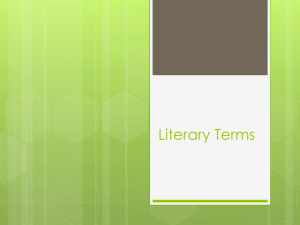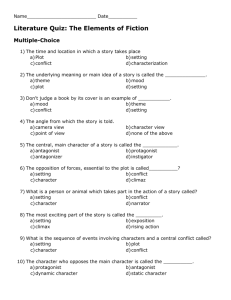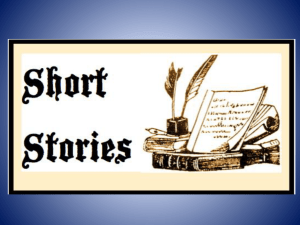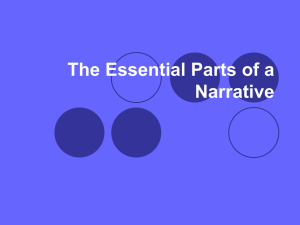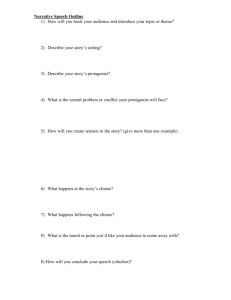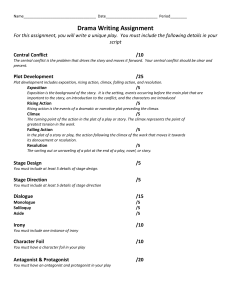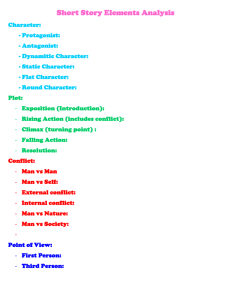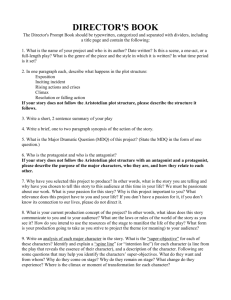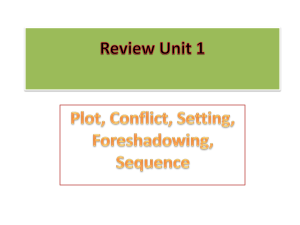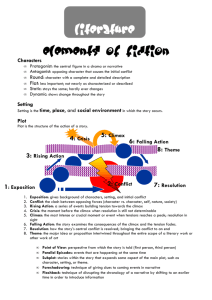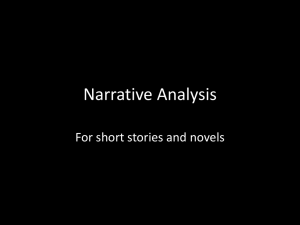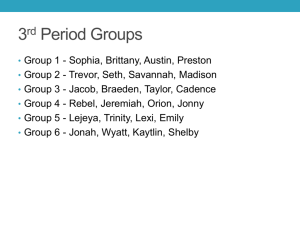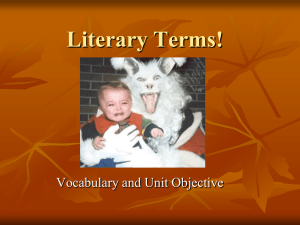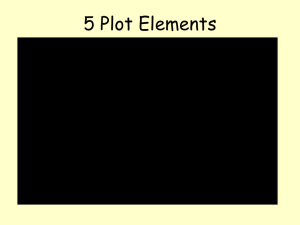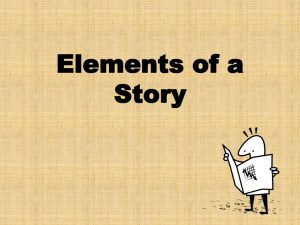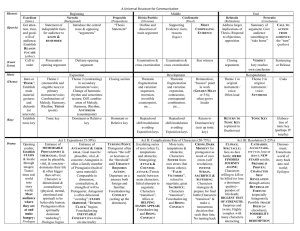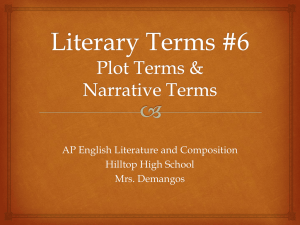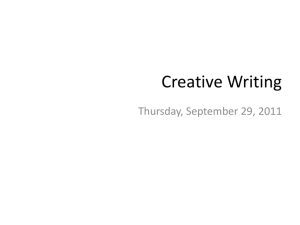story_elements - lifeisliterature
advertisement
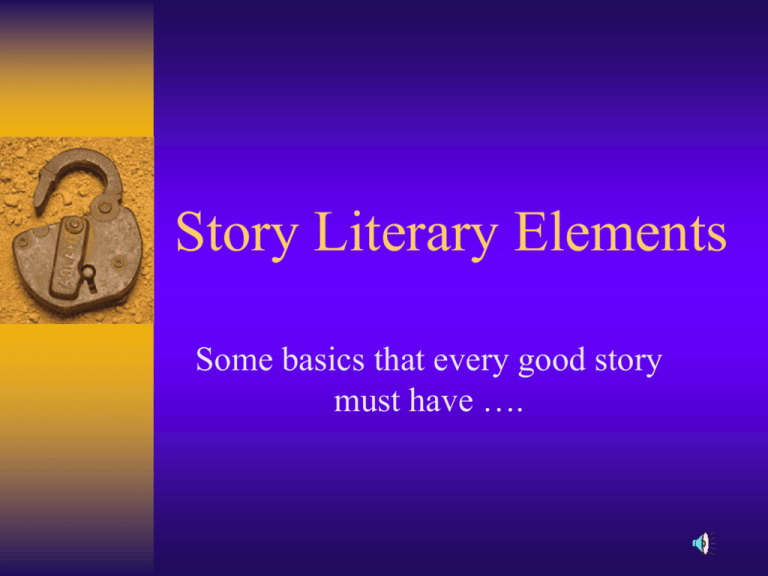
Story Literary Elements Some basics that every good story must have …. Short Story elements Derived from the ancients Through oral tradition Need to tell and hear stories • • • • • • Egyptians Old Testament stories New Testament parables Greeks (Odyssey) Roman (Aeneid) Chaucer’s Canterbury Tales Development of Short Story 19th Century America: art form – Nathaniel Hawthorne “Young Goodman Brown”; “The Minister’s Black Veil” • The mystery of sin – Edgar Allan Poe “The Tell Tale Heart”; “The Fall of the House of Usher” • The power of blackness – Washington Irving “The Legend of Sleepy Hollow”; “Rip Van Winkle” • Transition from European to American By Definition A brief fictional narrative in prose 500 words to 12,000 words Unity in plot (beginning, middle, end) Reveals character through series of actions Gives effects of intensity Limited time periods (1 hour; 1 day) – Poe once said that a short story should be short enough to be read at one sitting Plot Sets character in motion Gives story its direction Focuses on exposition “What” Focuses on conflict “Why” Focuses on narrative structure “How” Great stories have a conflict Man vs. Man Man vs. Nature Man vs. Society Man vs. Machine Man vs. Himself A hint about what will happen next is called foreshadowing For example, if you hear this: Then you know someone’s about to get eaten! Linear Plot Structure Climax Rising Action or Conflict Exposition Falling action and resolution Characterization •Definition: individualized personality •Behavior: actions, speech, dress •Qualities: status •Characteristics: physical, psychological •Traits: cultural Every story needs characters People Animals Or Creatures The protagonist is the “good guy” The antagonist is the “bad guy” or force Methods of Characterization 1. Direct Exposition: the author gives details 2. Character in Speech: dialect; vocabulary 3. Character in Action: behavior; deeds 4. Character in Thought: soliloquies 5. Character to Character: third party The time and place of the story is the setting Setting Three types of setting 1. historical: social, political, economic 2. geographical: place (e.g. United States, Europe, big city, small country farm, desert, mountains) 3. physical: time, weather, day/night Four Functions of Setting 1. to provide conflict 2. to illuminate the characters 3. to establish mood 4. to make fiction credible “Araby” Review the first 3 paragraphs. Make a list of 25-50 words that reflect setting. The point of view is the perspective of the story “That rotten wolf tried to eat us!!!!” “I was framed! I just wanted to borrow a cup of sugar!” Point of View It can describe the way in which the reader is presented with the materials of the story or action Simply put, it is the way a story is told The perspective of the storyteller Types of Points of View •Omniscent or 3rd person: most common •First person: intensity of narrator •Objective: report; facts •Innocent eye: child-like ; satiric; reliable •Stream of consciousness: unorganized thoughts; flow of memory recalled by association; thoughts become the basis for analysis of plot Symbol, Allegory, Myth 1. Something that represents something else • Red rose=love 2. A narrative in which the characters personify ideas, concepts, qualities, or other abstractions to communicate moral principles •Young Goodman Brown=an inexperienced good common man 3. A story that explains or gives meaning to the values of a culture; partly true, partly false by which people live and die •Creation myths=Adam and Eve Whether you’re the reader, or the writer, a great story includes all these literary elements!!! foreshadowing protagonist conflict climax characters setting antagonist point of view
